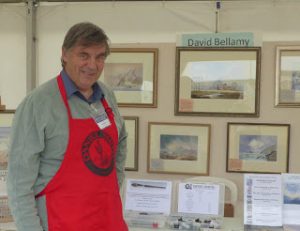I had hoped that Covid-19 would have slowed things down and given me much more time to catch up on those jobs that have been abandoned over the years, but I seem to be as busy as ever. I still ensure that I get out more into the hills and have plenty of exercise, as I strongly feel this helps the creative juices as well as one’s well-being.
We’ve enjoyed some amazing skies lately – beautiful, billowing cumulus clouds have been a stunning feature of the last few days, and it’s an excellent opportunity to sketch and photograph cloudscapes to use in your landscape paintings. I rarely paint a scene depicting the sky that happened on that particular day, as they don’t often make an exciting composition. I prefer to think about the mood that would fit that particular scene and then the kind of sky that might work best with that mood. Usually there are several options with completely different effects, allowing you to paint the same subject several times, each with a widely varying result.
This watercolour is of Volquart Boonsland seen in evening light from across the polynya at Scoresbysund. It was a beautiful, tranquil Arctic evening, though intensely cold. In the painting my aim was to recreate the moment, that lovely period of tranquility, where there is utter peace completely shut off from a mad world. To achieve this mood I treated the sky with the emphasis on horizontal layers of cloud, with the light coming in from the right.
The painting is currently featured in my article on painting exciting skies in the Summer 2020 issue of Leisure Painter magazine where it explains how I rendered the sky, and can also be seen in my book Arctic Light. Try doing quick, simple studies of skies, and if you are house-bound then this is something you should be able to do from your windows, as the Impressionists did when they didn’t relish going out in the depths of winter. Set up a comfortable chair by the window in readiness for the next batch of exciting clouds to sally forth.





